Thankyou Sparrow and Timeout, the ferret was a couple of years ago (we just doing a test run with photos). Some wanker had a fitch farm up here and released them when it went arse up, I was trapping a lot of them in cages with blue stuff on apples (probably following rat smell) in Timms with fresh rabbit bait in doc 200s and 250s with rabbit and also in tunnels, it was quite exciting then I ran out of them, probably the rabbit population shrank with the calicivirus. I've 5 or 6 trail cameras and have only filmed one since. If I could catch another live one Id keep it and use its bedding in most of my traps. Today's possum - I really rate these Possum Masters very versatile they will catch almost all pests
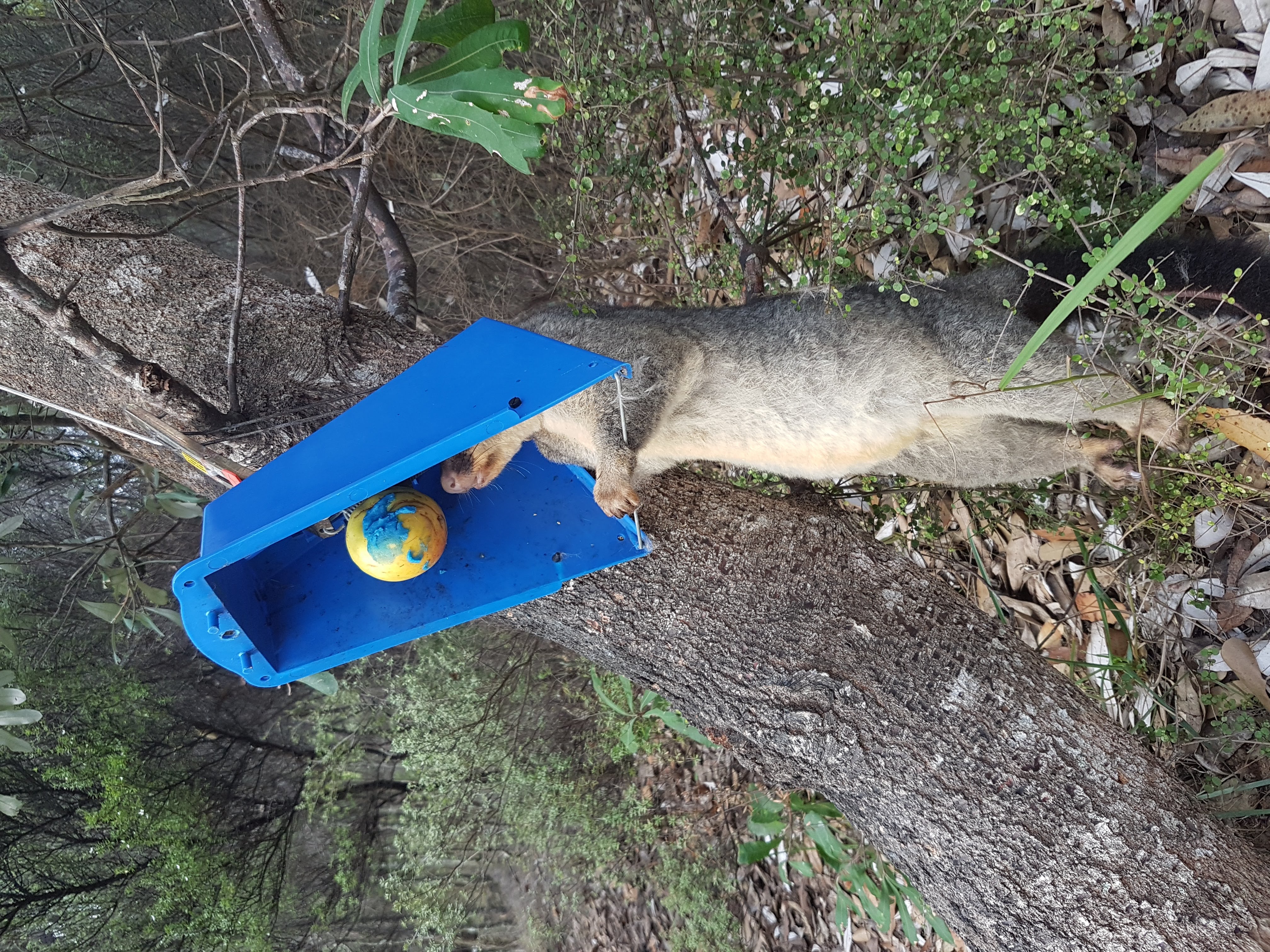
Welcome guest, is this your first visit? Create Account now to join.
Welcome to the NZ Hunting and Shooting Forums.
Search Forums
User Tag List
+ Reply to Thread
Results 466 to 480 of 886
Thread: Bird Predator Control
-
11-05-2020, 08:52 PM #466Member

- Join Date
- May 2020
- Location
- South Head, Kaipara.
- Posts
- 34
-
-
16-05-2020, 02:22 PM #467Member

- Join Date
- Jul 2019
- Location
- Canterbury
- Posts
- 618
How lucky do you get , no not me...
I checked a line of my high country traps yesterday. The week before i had done another line up there where in 1 trap i had caught a freshly killed rat. Lets use this as bait i thinks to myself. I put the rat in a Doc 200 set up and checked it as i was going home yesterday. Bloody hell the box has been stolen as it wasnt where it should of been, then i think nah it wont of been stolen as they would of walked past 2 other traps which were still in place. So i have a scramble thru the matagouri [which is always loads of fun] and there is the box 10m away upside down with the egg inside but Mr rat gone... How blimmin lucky, I know there is a feral cat hanging around but couldnt believe it had the luck to go in an upside down trap box completely missing the treadle.. That particular trap has never caught anything in the 2 years it has been there despite being in a great location... put a rat in there and .... not quite a cigar but fingers crossed it will be next time. I have been catching a few mice in my shed and am putting them in an old freezer to use as bait, look out cat !..
Seems we are in winter catch mode now with not lots of activity, I am starting to use a few bits of salted road kill pukeko as the heat [lack of it] and flies wont affect the meat baits to much instead of eggs. The eggs freeze and the shells crack letting mice have a feed .. I will go back in a month if i can wait that long lol.
-
20-05-2020, 07:34 PM #468
A “bloody” big Norway that was running around our street adjacent to an avocado orchard
Just checking out some trap options under the hedge
He had a good choice of food on the site - peanut butter in a D Rat, chocolate in an A24, peanut butter in a trusty old Victor and a day old rat laying under the D Rat from yesterday
Bad move - he checked out the Victor - brain dead so he pulled out and up on top of the box - then crawled away about 500mm
A big Norway takes a bit of killing - but may depend where the kill bar hit him
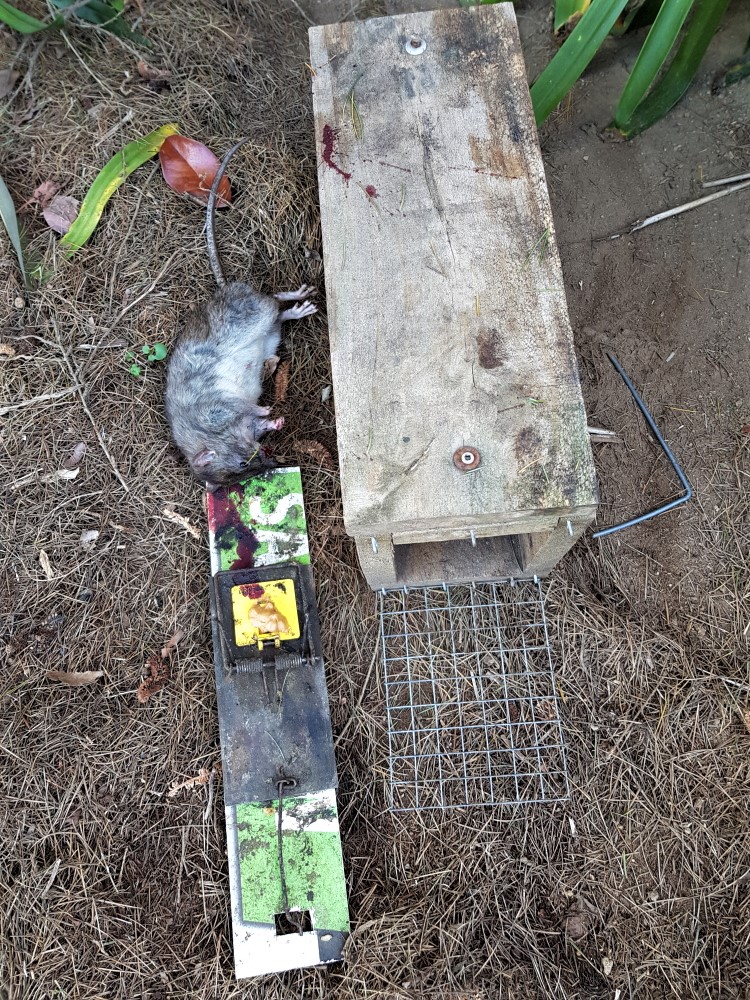
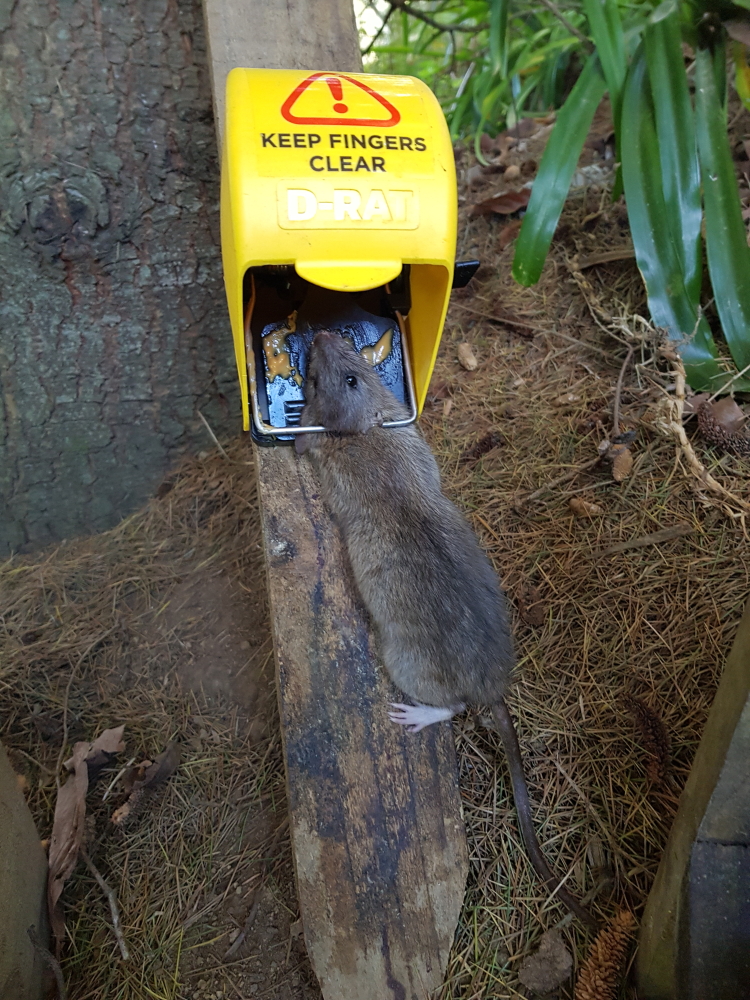
-
21-05-2020, 05:00 PM #469Member

- Join Date
- Oct 2016
- Location
- Auckland
- Posts
- 594
Hey guys I'm going to try and get a neighbourhood trapping program up and running in West Auckland. What would be you suggestions for rat traps and where to get them for people to purchase so they can get stuck in? Thanks
-
21-05-2020, 05:15 PM #470
-
24-05-2020, 01:07 PM #471Member

- Join Date
- Oct 2016
- Location
- Auckland
- Posts
- 594
Thanks guys for the info. I will contact Carol. I notice that they have the Victor plastic power kill cheaper than the old school Victor pro. Whats your experience using these easy to set traps. They would be easier for novice users in a neighorhood group to set. Do they get as many rats?
-
24-05-2020, 05:24 PM #472Member

- Join Date
- Jul 2019
- Location
- Canterbury
- Posts
- 618
I have bought both the pro and power kill traps. My preference would definitely be the Pro trap, it is more sensitive imo. The easy set traps are better for more sensitive type trappers in that they dont have to come anywhere near in contact to the guy that "got the bad news"
-
30-05-2020, 03:27 PM #473The Voice of Reason, Come let us Reason together...
-
31-05-2020, 07:40 PM #474
Fun for all the family. ( photo heavy)
Estuary traps were due for checking today despite tides and daylight not really playing ball, the entire family was keen for the walk which is always cool, except it took me 5 trips across the tidal creek in a keen south Easter to get them across by the 4th parts of my anatomy had gone north for winter the only positive was the dog likes to swim. 😆.
Catch rate was nothing like the previous round with only 2 cats this time, 1 weasel and a ship rat but still made for a great afternoon
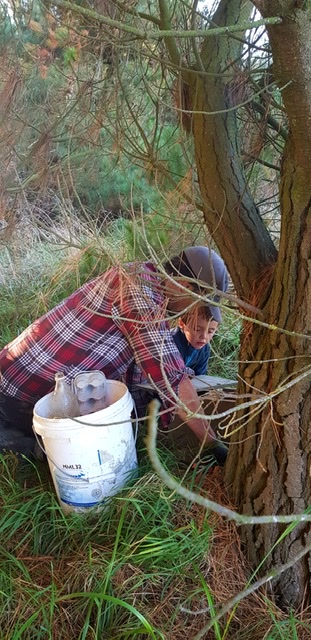

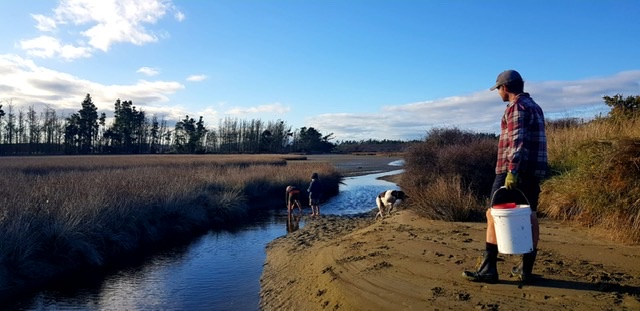
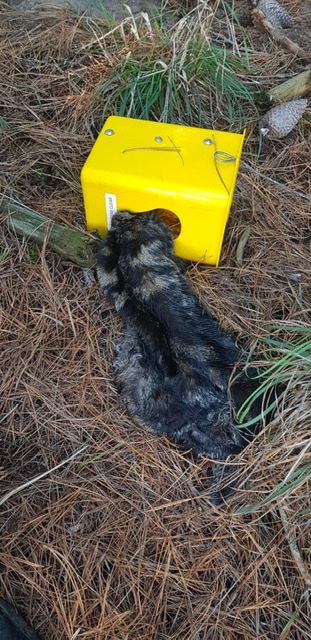
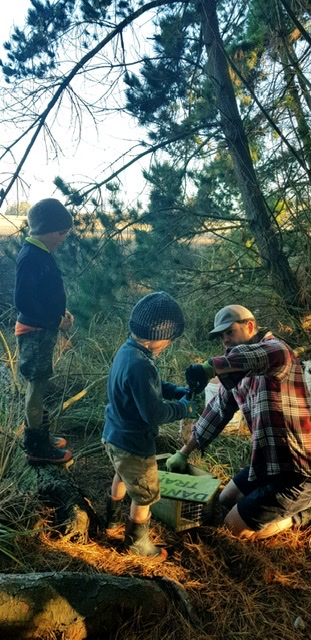
Happy as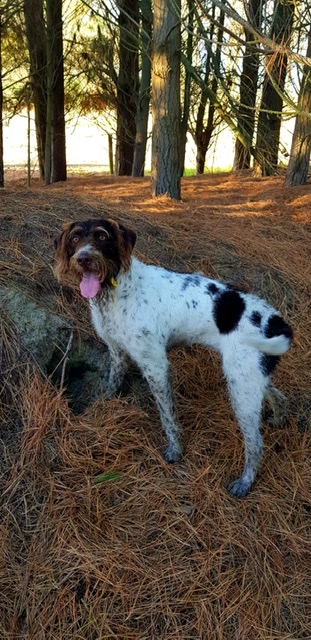
The slog back across , where the little guy usually gives up

Following the tip from here put a handful of freshly plucked mallard feathers in a few Traps with my usual baits so keen to see results, not much info in the post but the mrs takes good photos so I thought I’d share I know all our trap rounds are different.I grew up looking for frogs and shit!
You grew up looking for a wi fi connection.......we are not the same!
-
31-05-2020, 08:02 PM #475Member

- Join Date
- Dec 2016
- Location
- Peel Forest
- Posts
- 465
Ran leg hold traps post lockdown. Took 46 feral cats and the same amount of ferrets and stoats combined (mostly ferrets, half dozen stoats). I've been refining techniques for a while and have come to a few basic conclusions re effective trapping which is mostly applicable to the high country though some ideas will translate to all areas in NZ.
Maintaining / frustrating the predator at the bait station for as long as possible is key to success. To that end I've been securing fresh rabbit pieces under a large rock with a few similar rocks either side to both hold the bait and channel the cat directly over the trap. The rock needs to have enough mass to stop the cat being able to move it off the rabbit piece. Having an edge of the bait protruding is fine and helps with smell luring the animal in but no more and it should not be visible from the air or your traps will fill up with harriers (unintended victims which can be messy, distressing, illegal and renders one trap of no use for predators). Rabbit which has skin attached makes a much better smell than skinned rabbit and lasts longer in the trap. One rabbit gutted and chopped up into bits with a hatchet or clever will do about 20 traps. Areas of moderate rabbit concentrations during late Autumn trap well for both cats and ferrets as there is some competition for food. Cats like the dry areas that rabbits also prefer and ferrets prefer to be within 30 meters or so of water and close to rabbits. Dragging a rabbit carcass which has been opened up (split from bum to head) from trap to trap lays down a useful scent trail but only really works in dry weather. A trap which has been tripped and the bait stolen is one educated predator - a trap that has the bait stolen but has not been tripped is a half caught predator and you'll probably get it next time. A sparse covering of dry grass over a trap (sometimes called hazing) in order to help hide the trap loses more animals than it gains. The grass acts as a slippery medium which allows the paw to be pulled out. Using a grubber to bury a trap so that it is just proud of the earth or shingle level can help but the underside of the trip plate must be free of soil so it can be fully depressed. Freshly disturbed soil attracts both cats and rabbits so best not done when the young rabbits are out as you will catch them and not the cats (another clogged up traps situation).
There are no silver bullets here just attention to detail which is what makes for effective trapping - it's really hard to catch the ones that have had a narrow escape with a trap so putting the work in on the first set is the go
Happy tapping .
-
31-05-2020, 08:08 PM #476
@Sparrow You really needed to say that lot in a squeaky vioce after 4 crossings
 It's all fun and games till Darthvader comes along
It's all fun and games till Darthvader comes along
I respect your beliefs but don't impose them on me.
-
31-05-2020, 08:14 PM #477
Some photos its aweka and yet in others its a shag
"ars longa, vita brevis"
-
08-06-2020, 07:15 PM #478Member

- Join Date
- May 2020
- Location
- South Head, Kaipara.
- Posts
- 34
Helen and I share the trapping for SKLC, we make our own corflute rat boxes - they were originally designed for mustelids, Helen has had about 6 of them around her farm catching rats and occasionally the odd weasel. Last week a catering outfit was throwing away a large container of cheap mayonnaise so she grabbed it and put it on her rat traps, she got these 4 weasels that night. the trap in the boxes is a Victor Pro
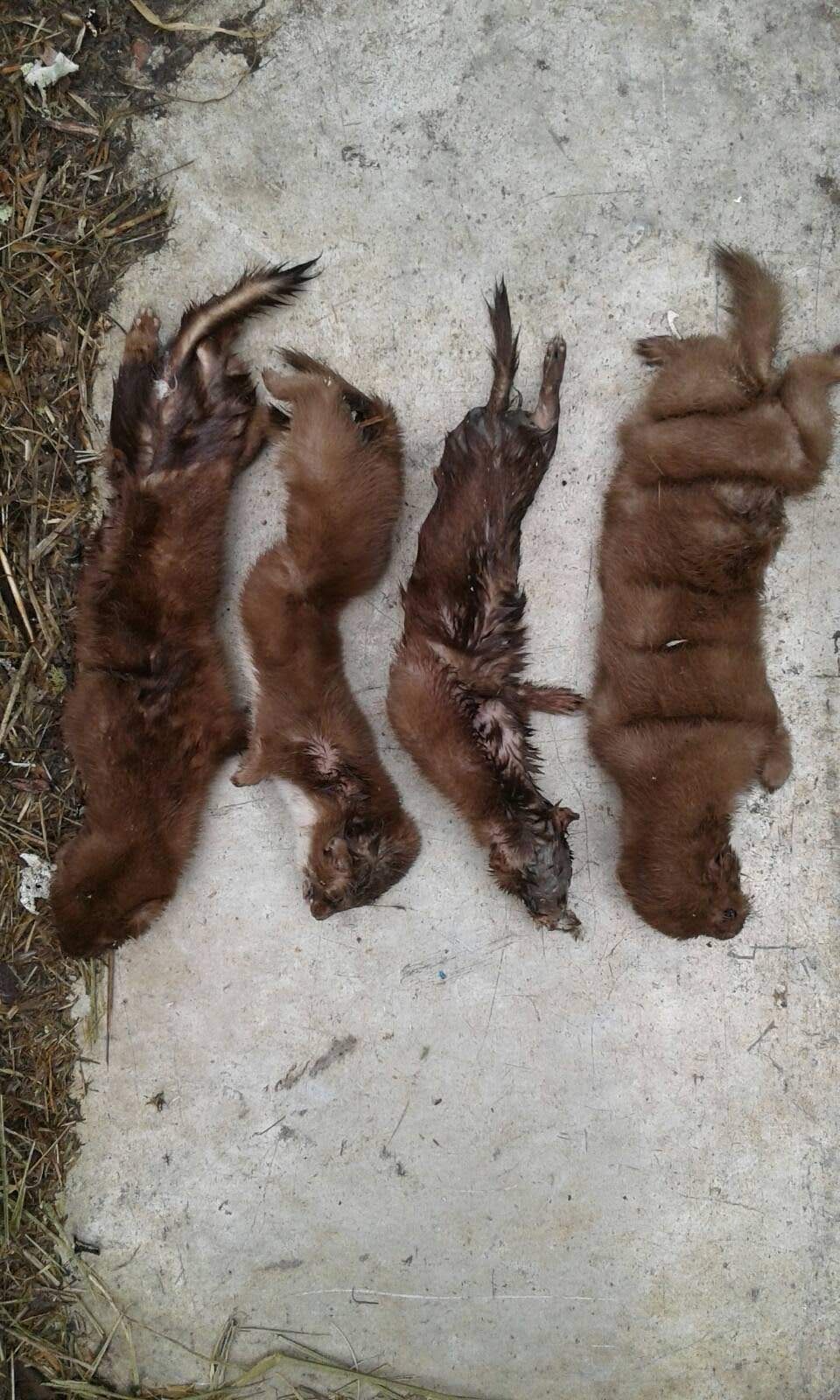
-
12-06-2020, 02:34 AM #479
Pest control started
My son has been working on a 200 acre block setting up for pest eradication.As a family with the children growing up we have done a fair bit on this block over the years! But it's now under new management and they are upping the eradication program.
Controled poisoning which hasn't been done to any great degree, plus more trapping, night shooting and cameras to detail what pest movements there are ! This helps so there can be a effort to bring in more traps or baits that may be required for the reduction of that particular pest.
Camera footage is always been great over the years, seeing what's moving about and they don't always go to the chew cards or ink pads as the footage has shown! if the cameras are set right and are of fair quality,they should pick up most movements.
It's a learning process! I had a lot of false triggers in the early part but learning is what takes place.
Cameras weren't used like they are today and the technology is far superior.
These two ferrets in winter coats are his official catch's and a good start to the program.
KHThe Voice of Reason, Come let us Reason together...
-
12-06-2020, 11:50 PM #480
Sisters
The sister is catch of the day. Three this week 1 male and two females, the young fellow is going well.
KHLast edited by Kiwi-Hunter; 12-06-2020 at 11:59 PM.
The Voice of Reason, Come let us Reason together...
Similar Threads
-
New 'Predator' dvd out soon......
By Mike H in forum FishingReplies: 2Last Post: 13-01-2013, 05:22 PM -
Prredator Control !!!!
By Dundee in forum Game Bird HuntingReplies: 12Last Post: 06-05-2012, 06:02 PM
Tags for this Thread
Welcome to NZ Hunting and Shooting Forums! We see you're new here, or arn't logged in. Create an account, and Login for full access including our FREE BUY and SELL section Register NOW!!





 1816Likes
1816Likes LinkBack URL
LinkBack URL About LinkBacks
About LinkBacks



 Reply With Quote
Reply With Quote





Bookmarks